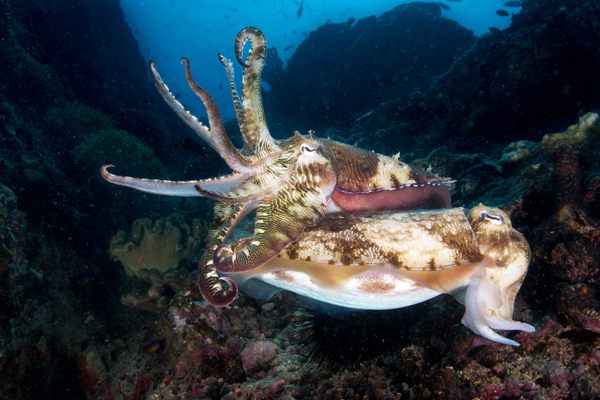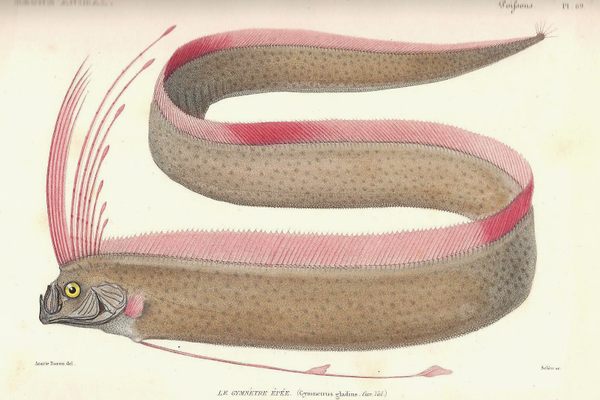Scientists Come Closer to Solving the Mystery of Coral Reef Halos
These light blue rings can be seen from space.

Elizabeth Madin first fell into the rabbit hole of reef halos while stranded on Heron Island in Australia in 2010. She had come there with her husband, child, and mother-in-law to conduct research on a field site off the island, but dangerously strong winds cancelled her plans. So Madin walked out to the only protected part of the island, a shallow lagoon speckled with light-blue rings known as reef “halos.” Though they have been observed for decades, scientists never entirely understood why these ethereal rings appeared with such frequency in coral reefs. Madin wanted to answer that question.
Almost a decade later, two new studies from Madin’s team at the University of Hawaiʻi at Mānoa, where she works as an assistant research professor, offer fresh insight as to how and why these mysterious phenomenon form.
When a coral reef is healthy, its halos can be seen from the heavens. These light-blue halos indicate patches of bare sand that encircle coral reefs, eventually giving way to greener meadows of seagrass or algae. In her previous research, Madin explained reef halos as a kind of “landscape of fear,” a distinct topography created when predators affect the distribution of plants by threatening their prey. In this case, fish and sea urchins would venture out from the safety of the reef to chow down on seagrass until they felt in danger from predators. The resulting radius of safety creates these patches of grazed-down sand. Under this assumption, reef halos at a no-take marine reserve—where fishing is prohibited—would be much smaller, as more populous predators would lead to more cautious fish.

But after comparing satellite imagery of halos inside and outside no-take reserves, the researchers found no difference in halo size, proving their initial hypothesis wrong. What they did find, however, was that reef halos were significantly more prevalent in no-take reserves, and most likely to form in protected areas where predators and herbivore populations have had time to recover from previous periods of fishing, Madin says. In other words, the presence of reef halos could indicate the health of predator-prey populations, and, by extension, the health of the reef. Their research is published in Proceedings of the Royal Society B.
Scientists previously believed plant-eating fish played the primary role in creating reef halos, but Madin’s team found that a much more complex ecological interaction between species was at play, according to research published in Frontiers in Ecology and Evolution. “It was funny because we never saw seaweed-eating fish go to the full boundary of the halo,” Madin says. “We thought something else had to be going on.” After setting up GoPros and infrared dive lights alongside halos at Australia’s Great Barrier Reef, the researchers observed that fish, such as sweetlips and emperor breams, that forage for subterranean invertebrates often disrupted the algae at the outer rim, thus enlarging the halo itself. “These fish have long and pointy snouts and nose around like a pig in the sand,” Madin says.
Halos are one of the few features of coral reefs that can be seen from space, making them a crucial tool in monitoring the health of large areas of coral reefs. “Once we fully understand the mechanisms behind these halos, they can tell us something valuable about how the reef ecosystem is functioning,” Madin says, adding that she does not believe satellite observation will ever replace traditional monitoring with divers. “But it can give us a broad, first-cut idea of how these ecosystems are changing over time.”














Follow us on Twitter to get the latest on the world's hidden wonders.
Like us on Facebook to get the latest on the world's hidden wonders.
Follow us on Twitter Like us on Facebook